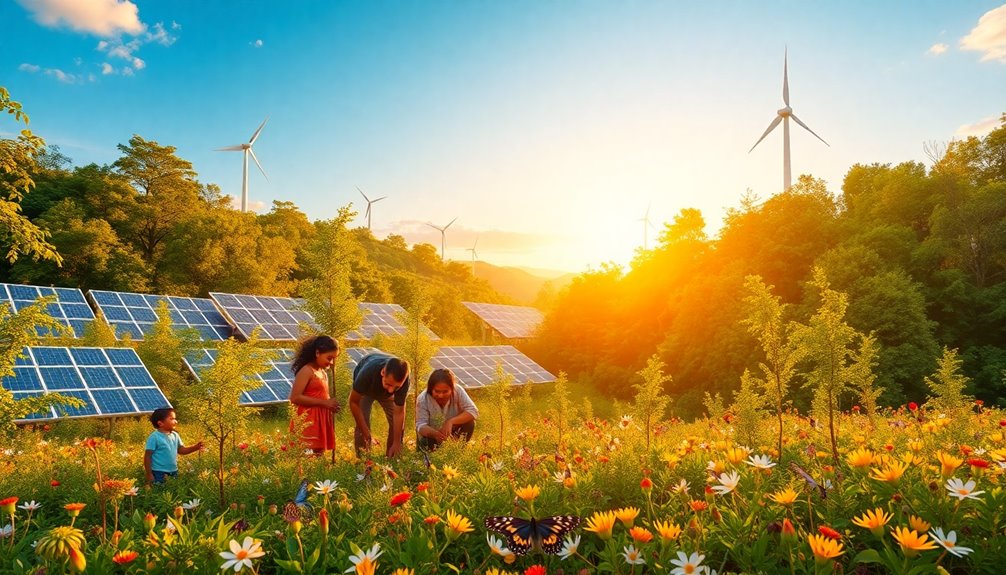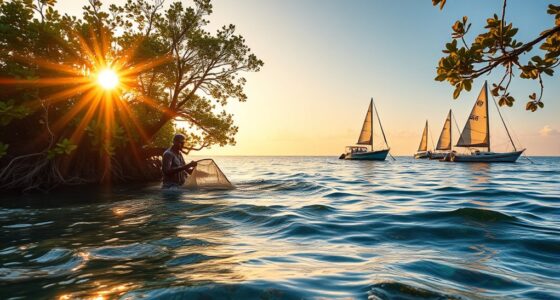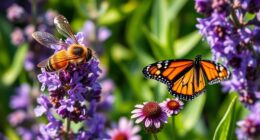The future of conservation is all about integrating new technologies, engaging communities, and finding innovative funding solutions. Drones and satellite imagery make wildlife monitoring efficient, while AI helps process vast data quickly. By involving local communities, you create strategies that resonate and foster ownership. Plus, eco-tourism and crowdfunding offer fresh funding opportunities. As climate change looms, adaptive strategies become essential. If you're curious about how these elements work together, there's much more to explore.
Key Takeaways
- Emerging technologies like drones and AI will enhance data collection and analysis for more effective conservation strategies.
- Community engagement will play a vital role, ensuring local knowledge shapes conservation efforts and fosters a sense of ownership.
- Innovative funding models, including crowdfunding and partnerships with private companies, will provide sustainable financial support for conservation initiatives.
- Climate change adaptation strategies will focus on nature-based solutions and sustainable practices to build resilience in ecosystems.
- Collaborative global efforts will unite diverse stakeholders, enhancing resource sharing and innovation in tackling environmental challenges.
Emerging Technologies in Conservation
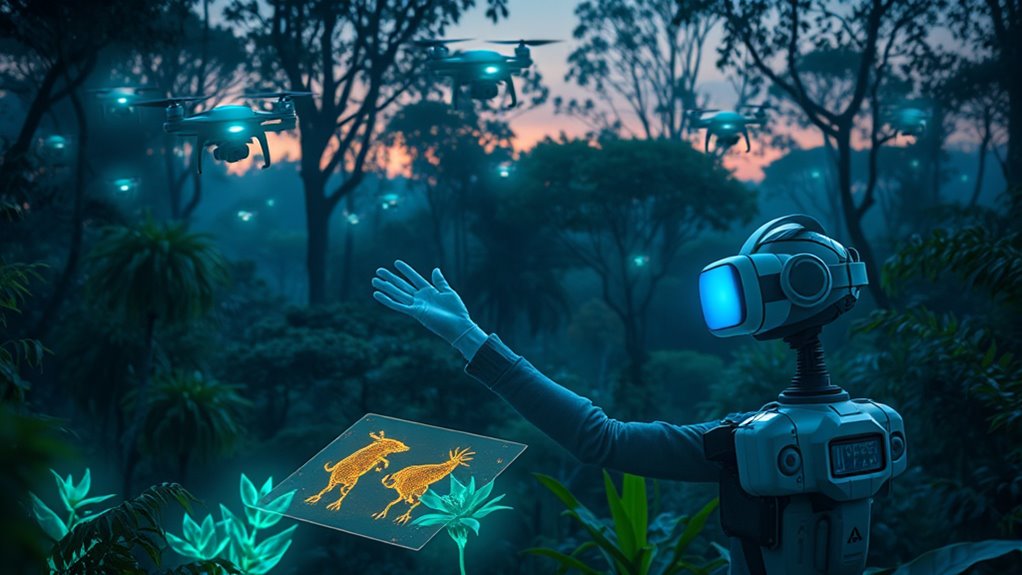
As conservation efforts face increasing challenges, emerging technologies are stepping in to transform how we protect our natural resources.
You'll find that drones now monitor wildlife populations with precision, capturing real-time data that helps track endangered species.
Satellite imagery allows you to assess habitat changes over vast areas, providing insights that traditional methods just can't match.
Additionally, artificial intelligence processes this data swiftly, revealing patterns and trends that inform better decision-making.
Mobile apps are empowering you to report environmental issues directly, while blockchain technology ensures transparency in conservation funding.
By harnessing these innovations, you can actively contribute to more effective conservation strategies, making a tangible difference in preserving our planet for future generations.
Embrace the future of conservation—it's already here.
The Role of Community Engagement
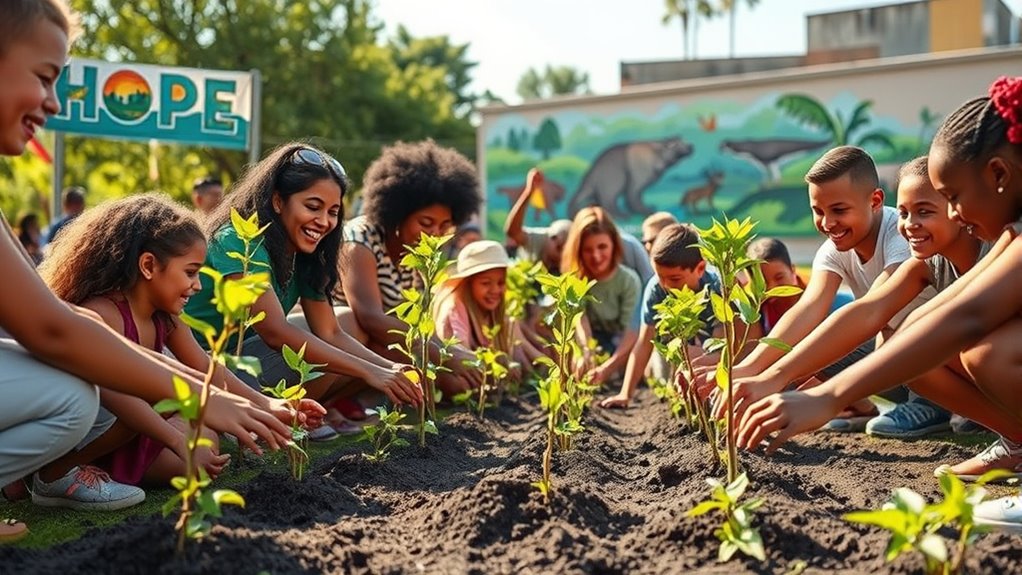
While technology plays a crucial role in conservation, community engagement is equally vital for fostering sustainable practices. When you involve local communities, you tap into their knowledge and passion for the environment. Their firsthand experiences can shape conservation strategies that truly resonate.
By encouraging people to participate in projects, you build a sense of ownership and responsibility towards natural resources. Workshops, volunteer days, and educational programs can empower individuals to take action. Plus, when communities see the benefits of conservation efforts, they're more likely to support and sustain them.
It's about creating a partnership where everyone plays a role. Ultimately, engaging communities not only enriches conservation efforts but also cultivates a culture of stewardship for future generations.
Innovative Funding Models for Conservation

In a world where traditional funding sources often fall short, innovative funding models for conservation are emerging to fill the gaps.
You might explore partnerships with private companies that fund initiatives in exchange for tax breaks or positive branding. Crowdfunding platforms allow individuals to contribute directly to specific projects, creating a sense of ownership and community involvement.
Additionally, conservation finance—using investment capital to fund environmental projects—can generate returns while preserving ecosystems. By leveraging technology, you can tap into new markets, like eco-tourism or carbon credits, offering attractive financial incentives.
As you engage with these models, you'll find that collaboration and creativity are key to ensuring sustainable funding for the future of conservation.
Climate Change Adaptation Strategies
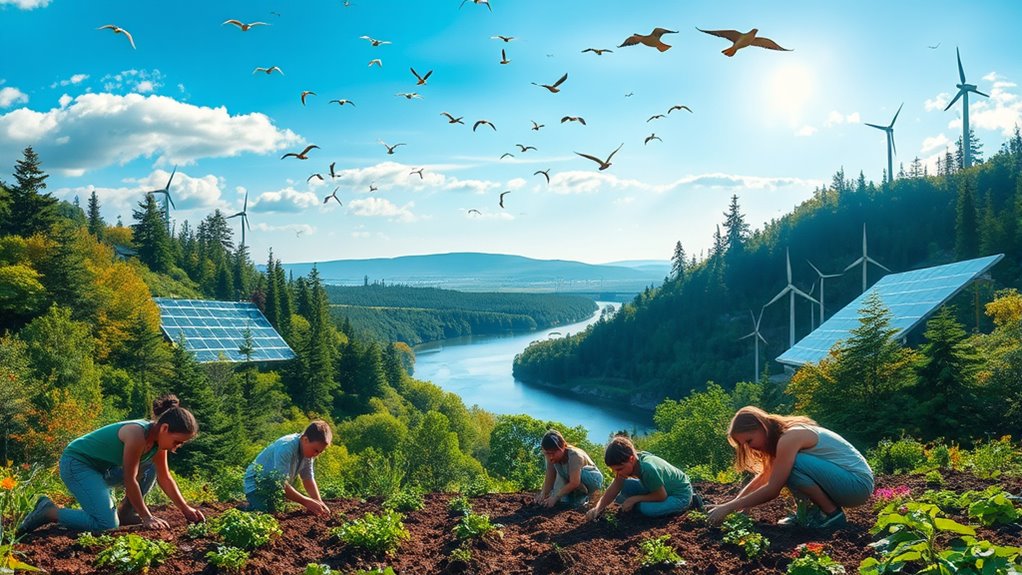
Understanding that climate change poses significant threats to ecosystems and human communities alike, developing effective adaptation strategies becomes essential.
Climate change threatens our ecosystems and communities, making the development of effective adaptation strategies essential.
You can start by assessing your local vulnerabilities, identifying which species and habitats are most at risk. Implementing nature-based solutions, like restoring wetlands or creating green corridors, can enhance resilience.
It's crucial to engage with local communities, ensuring their knowledge and needs shape adaptation efforts. You might also consider promoting sustainable land-use practices that reduce environmental stress.
Investing in education and awareness can empower individuals to take action. Finally, collaborating with policymakers can help integrate adaptation strategies into broader planning efforts.
Biodiversity Monitoring and Data Collection

As ecosystems face increasing pressures from climate change and human activity, effective biodiversity monitoring and data collection become vital for informed conservation efforts.
You can utilize technology like remote sensing and camera traps to gather essential data on species populations and habitat health. Engaging citizen scientists also boosts data collection, allowing you to tap into a larger network of observers.
Regularly analyzing this data helps you identify trends, threats, and opportunities for intervention. By creating databases and sharing findings, you foster collaboration among researchers, policymakers, and communities.
Ultimately, robust monitoring tools empower you to make evidence-based decisions, ensuring that conservation strategies address current challenges and promote biodiversity resilience for future generations.
Collaborative Efforts in Global Conservation Initiatives
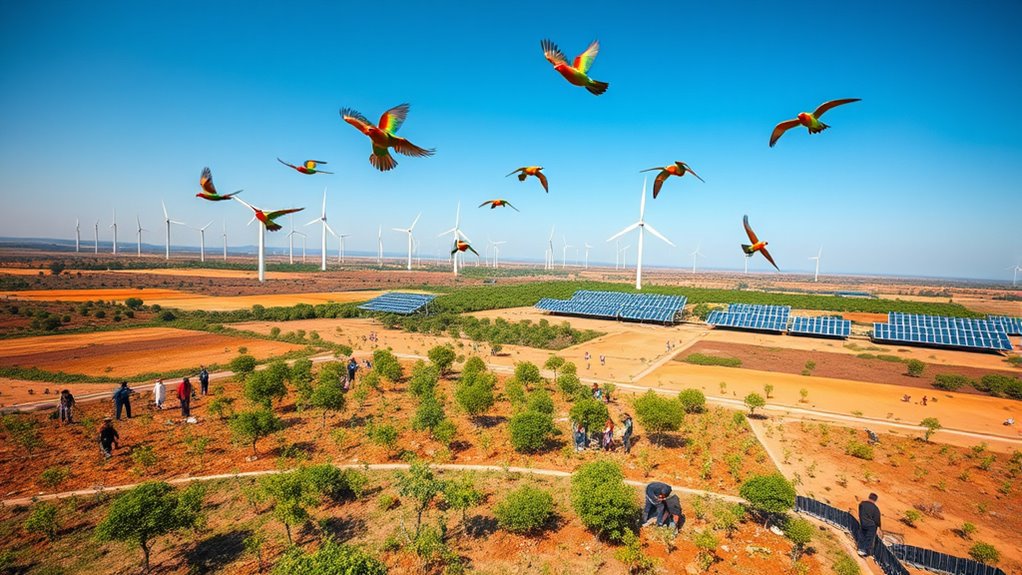
Building on effective biodiversity monitoring and data collection, collaborative efforts in global conservation initiatives play a pivotal role in addressing environmental challenges.
You can see how organizations, governments, and communities unite to share resources, knowledge, and experiences. These partnerships enhance the effectiveness of conservation strategies, ensuring that local needs align with global goals.
By participating in these initiatives, you'll witness firsthand the power of collective action. Engaging with diverse stakeholders not only broadens perspectives but also fosters innovation in tackling issues like habitat loss and climate change.
Whether through joint research projects or community-driven programs, your involvement can make a difference. Together, we can create sustainable solutions that protect our planet for future generations.
Frequently Asked Questions
How Can Individuals Contribute to Conservation Efforts in Their Local Communities?
You can make a real difference in your local community's conservation efforts by participating in clean-up events, planting trees, or starting a community garden.
Educate yourself and others about local wildlife and ecosystems, and advocate for sustainable practices.
Volunteer with local conservation organizations or initiate recycling programs.
By supporting local farmers and buying sustainable products, you help protect the environment.
Every small action you take contributes to a healthier planet for everyone.
What Are the Most Effective Ways to Raise Awareness for Conservation Issues?
Imagine planting seeds of awareness that blossom into a forest of action.
To effectively raise awareness for conservation issues, you can use social media to share compelling stories and visuals, host community events that inspire dialogue, and collaborate with local organizations to amplify your voice.
Engaging conversations, educational workshops, and eye-catching campaigns can ignite passion in others, turning passive observers into active participants in the fight for our planet's future.
How Does Conservation Impact Local Economies and Job Markets?
Conservation directly boosts local economies by creating jobs in areas like tourism, wildlife management, and sustainable agriculture.
When you invest in preserving natural resources, you're also supporting local businesses that rely on these ecosystems. Communities benefit from eco-tourism, attracting visitors eager to experience nature, which generates income.
Additionally, conservation initiatives often lead to grants and funding that enhance infrastructure, further stimulating job markets and improving overall quality of life for residents.
What Role Do Indigenous Practices Play in Modern Conservation Strategies?
You'd think modern conservation relies solely on cutting-edge technology, but it's often indigenous practices that shine.
These time-tested methods promote biodiversity and sustainable resource management. By incorporating traditional knowledge, you're not just preserving ecosystems; you're honoring cultures that've thrived for centuries.
Ironically, the very techniques once dismissed are now at the forefront of effective conservation strategies. Embracing this wisdom can lead to more resilient environments and stronger community connections.
How Can Schools Integrate Conservation Education Into Their Curricula?
You can integrate conservation education into your school's curriculum by incorporating hands-on activities like gardening or recycling projects.
Encourage students to participate in local conservation efforts, such as clean-up days or habitat restoration.
Use multimedia resources to teach about ecosystems and biodiversity, and invite guest speakers from environmental organizations.
Conclusion
As you look toward the future of conservation, think of it like planting a tree. Each emerging technology, community effort, and innovative funding model is a seed that, with care and attention, can grow into a thriving ecosystem. Just as a tree needs diverse roots to stand strong, our collaborative efforts will create a robust foundation for biodiversity. By nurturing these initiatives, you're not just protecting nature; you're ensuring a flourishing planet for generations to come.
